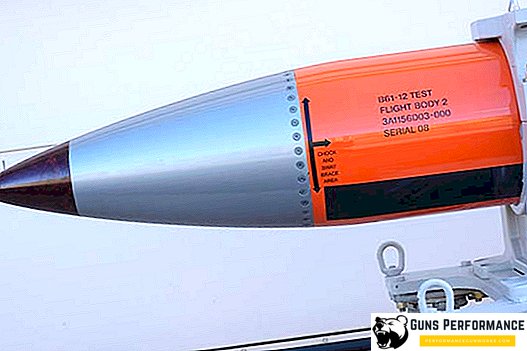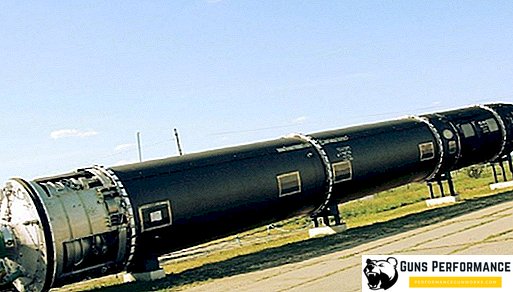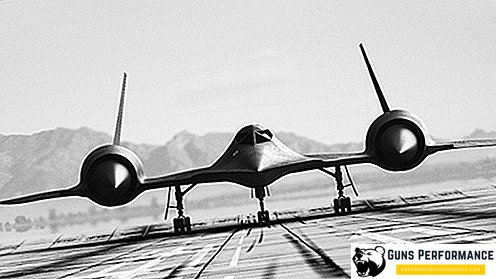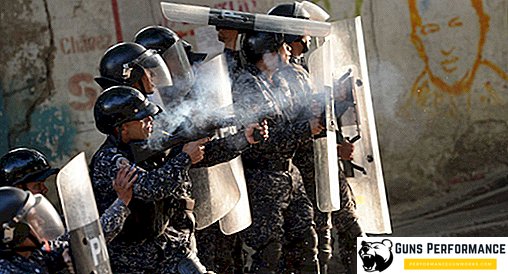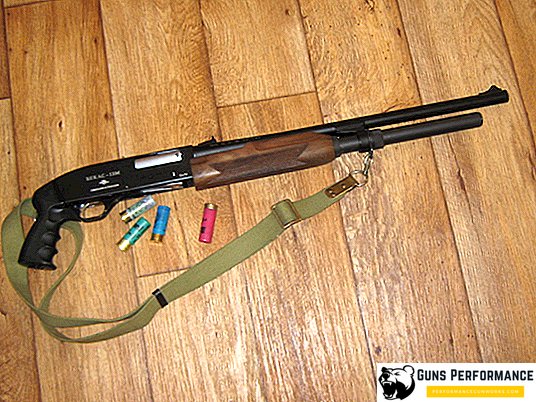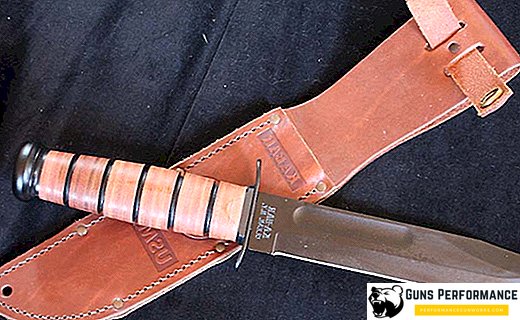
The most important tool in any campaign is the tourist knife (unless you count axes, of course). Any knife can be useful in the forest, but it is better to have a multifunctional knife or a set of highly specialized ones. A person who knows how to handle a blade will find use for any blade, and even the best powder steel knives will not help an inexperienced tourist.
Cold weapons or not

There is a perception that tourist knives belong to melee weapons. This is not entirely true. There is a guest who clearly defines the signs by which a knife can be attributed to melee weapons. When buying a knife in stores, be sure to request a certificate that contains a link to the guest and determines the parameters by which this knife does not belong to cold weapons.
If there is no certificate for the knife (for example, you made it yourself or bought it from your hands), then you need to know the main differences between the “cold” knife and the skin or tourist knife.
GOST of cutting and skinning knives specifies signs on which the knife does not belong to melee weapons:
- A knife of any design, with a long blade up to 90 millimeters is not a cold weapon (CW);
- When the thickness of the blade is less than 2.4 mm, the knife may have a blade length of up to 150 mm, while its handle may have a stop and subfinger grooves;
- With a blade thickness of more than 2.6 mm, the knife may be longer than 90 mm in the presence of a traumatic handle (this means the absence of a stopper and subfinger grooves);
- The parameters associated with the bend of the blade and handle. For example, the Nepalese kukri (this is a real combat knife) is referred to as a household knife by the household.
The guest about sports and tourist knives has similar parameters, only the blade length in this case can be up to 220 millimeters.
How to choose the best tourist knife

In order to find the optimal knife for your purposes, you need to remember what you usually do with a knife on a camping trip. If you are a hunter or a fisherman, the work for knives is enough. A hunter in a backpack can have axes, an inconsistent knife, or a whole set of knives. Many carry folding knives in their pockets, find a place in their backpack and saw, and an ordinary tourist on a camping trip can never get his set.
Work for which the tourist may need a knife, usually such:
- If there is no saw, and the knife is massive enough, they can chop up wood chips for igniting the fire. Inexpensive knives are perfect for this procedure. It’s hard to imagine a tourist who would be stabbing logs with a good powder or damask knife for 20 or more thousands;
- You can cut the ax handle if it is broken;
- Cutting food for lunch;
- If you manage to catch fish, the knife is useful in order to clean it. In this case, the quality of the blade in general does not play any role, even Chinese multifunctional ones (which are knife, fork, spoon) or dull kitchen ones will do.
That's all the main work, for them will be quite a simple knife with a blade length of about 15 centimeters, and steel 65x13 or 95x18. The parameters of such a tourist knife are perfect for the novice traveler. It's not scary to lose it, you can give it to the inept hands of your comrades, sharpen it, and hold it on the grinding bar a couple of times.
In general, when setting up the camp, most of the work on its construction is performed by an ax and saw, but often the ax is thrown into a backpack for a tick, and the saw has never been sharpened since the moment of purchase.
A very important quality for camping knives is the simplicity of their design and the overall "indestructibility." The knife will have to open the cans, dig the ground, so it should be with a fairly thick and strong blade. The quality of the steel is not particularly important. Most likely, you will lose this knife through several hikes. The next blade will be acquired more deliberately, it will be worn in a good leather sheath and will not be awarded to everyone in a row. The handle is better to choose all-metal with overlays, you can even hang on such a knife, nothing will be done to it.
If you are already an experienced tourist, then you should have a sharp ax in your backpack, and a clumsy camp knife will replace the sharp Finn from Swedish manufacturers. A set of two MORA CLASSIC, big and small, will cope with all the camp work that the ax will not finish. Moravian carbon steel has a very aggressive cut and is easily sharpened on a cheap grindstone.
Folding or clumsy knife - which one is better?

Despite the advantages of knives with a fixed blade, the main advantage of a folding knife is its low weight and compactness. Many models are also multifunctional, represent a whole set of tools.
If the hunter needs a serious knife that can be used to cut the prey, and a long and thin filet of knives is useful to the angler, then the tourist can easily do with a folding blade. When working with a folding knife, you should consider the following nuances:
- Foldable design is less reliable than fixed, so the power work should be done with caution. It is better to immediately forget about chopping up the wood chips. Some even manage to throw folding knives into trees, as a rule, it ends with breakdowns and injuries;
- The blade of a folding knife may not be fixed and, if it is sloppy working, it is easy for you to fold onto your fingers;
- It should be remembered that for the compactness of a folding knife has to pay a small blade size. Bread or boiled sausage will have to cut round;
- The mechanism of the folding knife is very sensitive to dirt. After the hike, it should be cleaned and rinsed under running water. In case of severe contamination, a thorough cleaning with dismantling of the folding knife and lubrication of the hinges will be required.

Do not try to prick nuts or something to push the handle of the folding knife. When used in such jobs, even a quality and expensive knife will not last more than one season. Choose either multifunction knives of the type VICTORINOX, or knives with a lock that rigidly fixes the blade. Most often locks like liner lok and axis lok meet. Axis is more structurally complex, but the reliability of fixing surpasses the liner-type lock. From the purchase of single-cut knives without fixing should immediately refuse.
Types of tourist knife shanks
The shank is the back of the blade, which is hidden in the handle and serves to fix the blade. Shanks are of two types:
- Through installation when the shank passes through the entire handle and is fastened with a nut on the back side;
- Equipping the installation when the shank to go into the handle about two-thirds of its length.
There is another type of blade mounting, when the shank is the middle of the handle, and on the sides there are fasteners attached to it (full thang system). A blade with such a shank is called a “blank”.
Many firms produce so-called survival knives, in which there is no shank itself. But in the hollow handle, you can store various necessary little things. The reliability of such a knife raises great doubts and is definitely not worth buying as a tourist. These knives are designed as part of an emergency reserve (pilots, sailors or travelers) and should be used in unforeseen situations. For example, in a crash. In such a situation, needles, hooks and a flint of a handle will be very useful.
Equipping the mounting of the shank is reliable enough, but only if you are sure that it runs on two thirds of the handle. When buying such a knife from hands or in stores, it is quite difficult to say. Recommend to buy cheap Swedish knives can be, the manufacturer monitors the quality of their products. Of course, you should not stick it with all your might into the tree and hang on the knife, but he will do most of the work. It is worth noting that most of the traditional knives are made using universal mounting technology.
Through installation - a more reliable design, often the nut on the back side of the handle is polished or a plug is inserted from above. Despite this, many manufacturers, in order to save metal, make such a shank in two parts. To a short shank of a knife the usual hairpin is welded. And often the shank is no more than two centimeters. It is impossible to check how the installation was done without disassembling the handle; therefore, such knives should be purchased from reputable companies that will give a guarantee or proven knives.
The most reliable installation of the blade is a system of full thang. Unfortunately, such knives are rather inconspicuous in appearance and are not very popular.
Sharpening knife

Sharpening of any blade must be made at a certain angle, and it depends on the tasks that the knife will perform in the campaign. For example, for cutting fish and skinning, the optimum angle of sharpening will be 10-15 degrees. If you plan to cut soft materials and food with a knife, then you should choose an angle of 15-20 degrees (by the way, the famous Japanese katanas were sharpened at precisely this angle). Universal tourist knives can be sharpened at an angle of 20-25 degrees. If it is planned to open the cans and prick chips with a knife, the sharpening angle can reach 40 degrees.
The very process of sharpening - the procedure is quite simple. It is worth starting with large-grain stones, gradually moving to smoother stones. After sharpening, it is advisable to fine-tune (polish) the cutting edge on the skin with GOI paste. Sharpening solves the following tasks:
- Restores the shape of the cutting edge (or changes it to the desired angle);
- Grinds the edge to the desired smoothness.
In order to sharpen the blade under the desired degree, when sharpening, you need to hold the blade at this angle. If the knife has already been sharpened at the right angle, it will not be difficult. To change the sharpening angle to a smaller one, you can use special tools. For example, the holder angle of sharpening or grinding systems such as "Lansky" or "Apex."
The main thing is when sharpening - do not press hard on the knife. This can damage the sharpening bar, and the price of quality stones is quite high.
Knife blade shape

For a tourist knife, the blade shape should be universal. Best of all, a proven for centuries form with a straight butt. You should not chase after pretentious forms such as tanto or scramasax, in work it will be only a hindrance.
Often there are such forms of blades:
- Clip point or finca;
- Spear point, spear shaped blade;
- Drop point, with a lower butt line;
- Various tanthoids (Japanese or American tantто);
- Trailing point - with increasing butt (perfect for cutting fish).
Everyone can choose a form that suits him. If you want a blade with a serreytor, remember that in field conditions it is almost impossible to sharpen it.
Knife handle
For the handles of tourist knives used a lot of different materials. Conventionally, they can be divided into two large groups:
- Natural materials;
- Materials of artificial origin.
Of natural materials, wood, leather, bone, horn, or a combination of these are most commonly used. Among artificial materials, rubber and various plastics are most often used. The combination of rubber and plastic is durable and does not slip in your hand.
Handles made of natural materials look beautiful, but need care. For the camp knife, the main criterion for choosing the material of the handle is the convenience of holding it in the hand. Do not take a knife with a metal handle, in the winter it will freeze your hand. Also do not take a slippery stick. If you are not sure of the strength of holding the knife, you can equip it with a loop for fixing on the wrist.

The choice of steel for a knife
Knife steels great variety. For the tourist knife you should not choose expensive steel. It is better to choose either stainless steel type 95x18 or carbon steel. Carbon has a more aggressive cut, but is susceptible to corrosion. 95Х18 - good enough steel, does not rust, but costs more than carbon. If you carefully use knives, you can buy an expensive powder steel blade.
Folding multifunction knives

For the tourist in a campaign the folding multipurpose multifunctional will become fine addition to a camp knife. They can be divided into two groups:
- High-quality multi-subjects "Victorinoks" and "Lazerman";
- Cheap Chinese or Russian sets with a spoon, fork, corkscrew and blade.
Knives from the first category will never be superfluous to have in a secret pocket, the functions of their use are wide enough (depending on the model, which is quite a lot), and the weight is small.
Knives from the second category will not replace the full cutlery, but taking into account the compactness it can be used for its intended purpose.
Choosing a tourist knife is a fairly important procedure. Buy a knife that will perform most of the camp work, and not hang useless weight on the belt.


